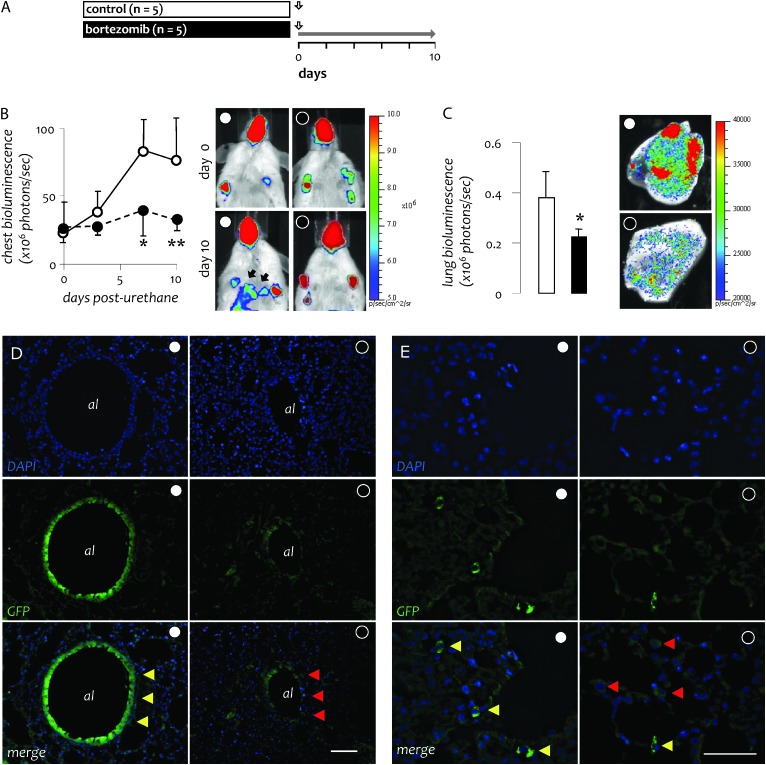Fig. 4.
Bortezomib inhibits urethane-induced NF-κΒ activation in both respiratory epithelium and pulmonary macrophages. (A) Experimental setup of NF-κΒ activation studies in transgenic NF-κΒ reporter mice expressing luciferase GFP under control of NF-κΒ (NGL; FVB strain). Vertical arrows indicate urethane treatment; horizontal gray arrow indicates period of bortezomib treatment. (B) Time course of chest photon emission as determined by in vivo bioluminescence imaging (left) and representative bioluminescent images (right). (C) Photon emission of lung explants at day 10 as determined by ex vivo bioluminescence imaging (left) and representative bioluminescent images (right). (D) Representative cross-sectioned airway epithelium (al = airway lumen) and (E) macrophages in pulmonary airspaces from urethane ± bortezomib-treated NGL mice. Blue and green fluorescence indicate, respectively, nuclear 4,6-diamidino-2-phenylindole staining and NF-κΒ-driven GFP expression. Yellow and red arrowheads indicate cells with high and low NF-κΒ activity, respectively. (D, Å = 100; scale bar = 200 μm; E, Å = 400; scale bar = 100 μm). Points in B and columns in C, mean; bars, SD. * and **: P < 0.05 and 0.01, respectively, compared with saline-treated mice.

